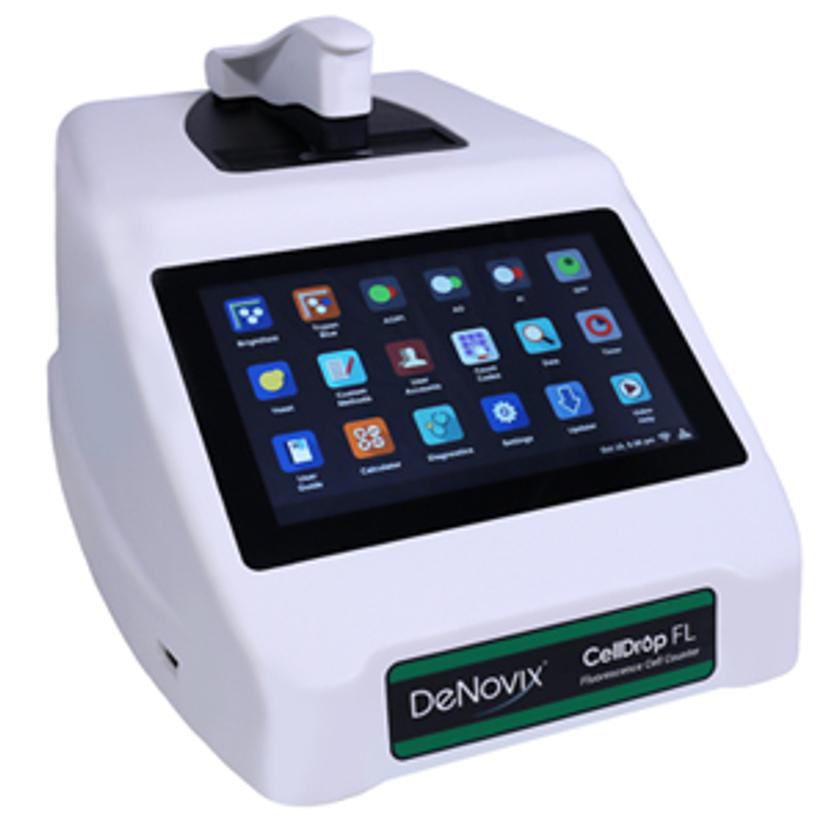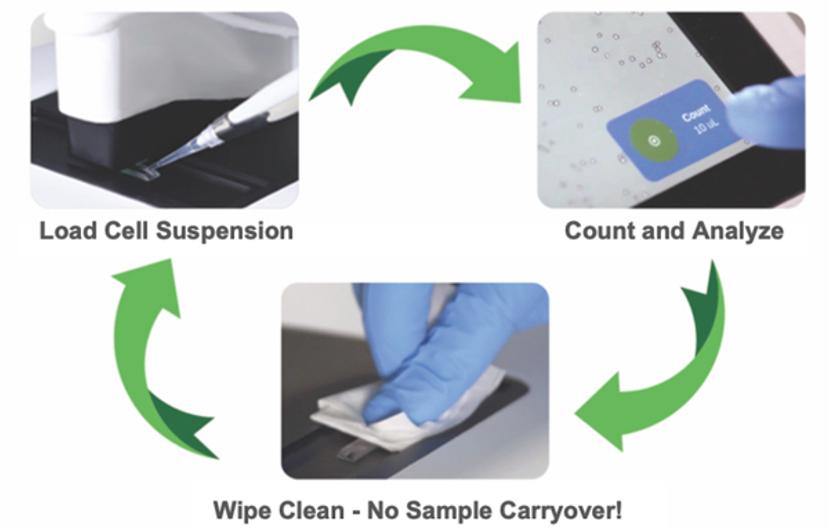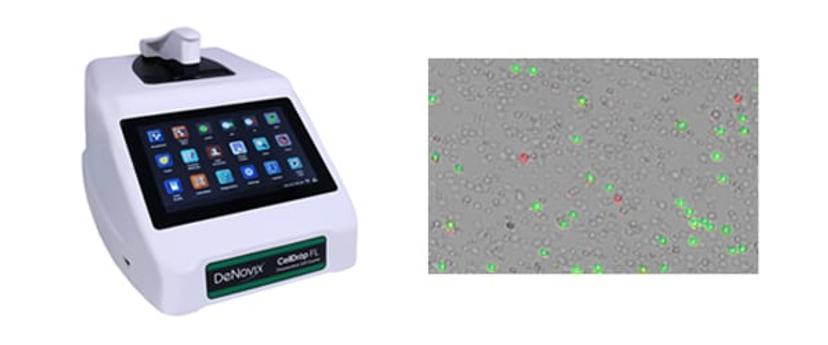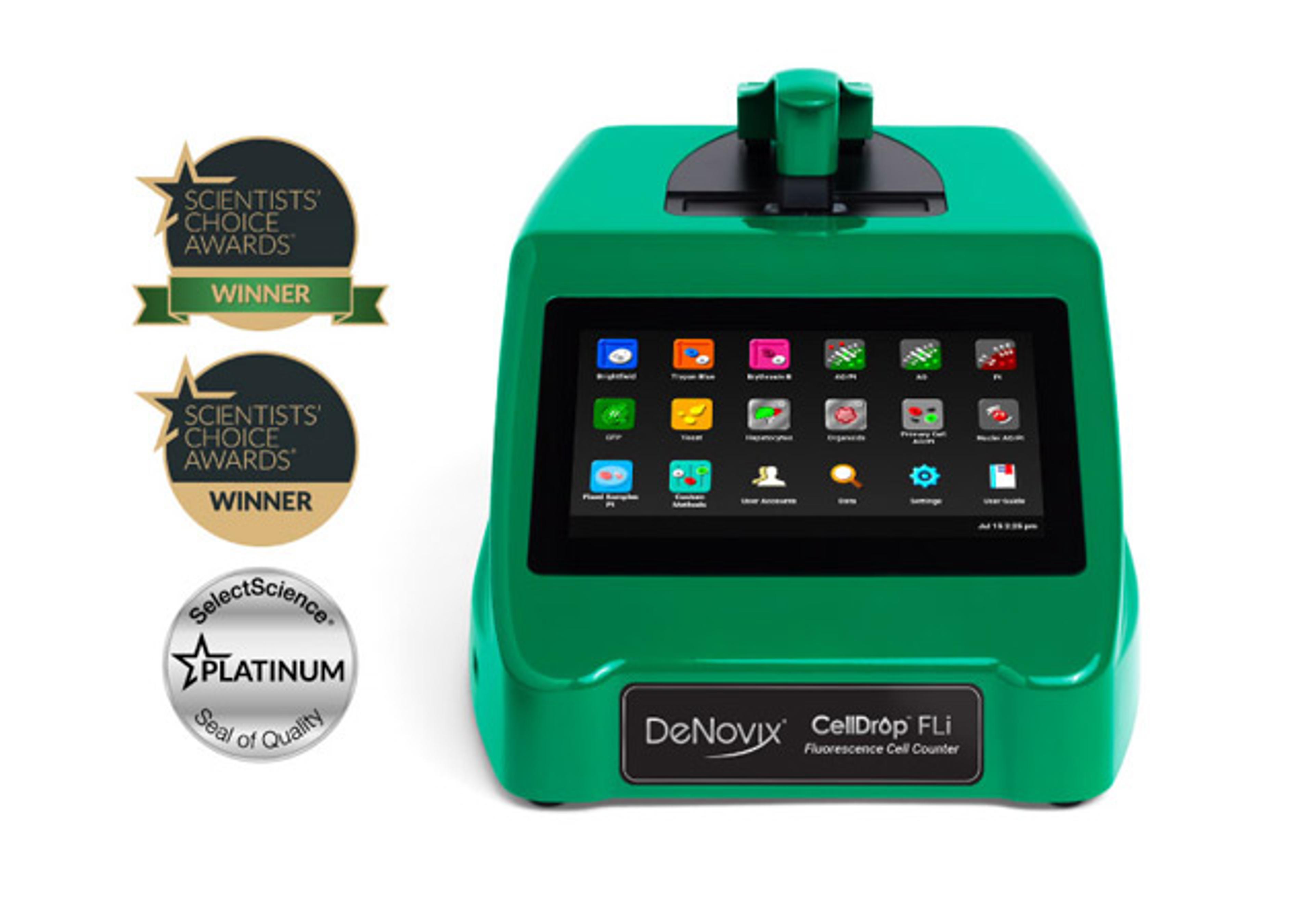New Automated Cell Counter Helps Reduce Plastic Waste in Your Lab
We find out about the revolutionary automated cell counter that improves lab sustainability and cuts costs too
11 Jun 2019

Manual cell counting using a microscope and a hemocytometer is time-consuming and prone to user to user variation. Automated cell counting options enable greater accuracy and consistency in routine counting; however, these systems tend to rely on disposable plastic slides.
With a drive towards sustainability and reducing the environmental impact of the laboratory, the new DeNovix CellDrop™ Automated Cell Counter incorporates a novel sample loading method that eliminates the need for slides altogether, while also enabling users to measure cells in seconds with just 10 μL of sample.
SelectScience speaks to Andrew Jones, market development manager at DeNovix Inc., about the CellDrop Automated Cell Counter and how it is revolutionizing the life science laboratory.
What are the current issues around technologies used in routine cell counting?
Currently there are two methods for routine cell counting used in labs. The first is manually counting cells using a microscope and a hemocytometer. This is a well-established method that has the advantage of being low cost and uses equipment that is standard in a cell biology lab. The downside is that it is time-consuming and is prone to inter-operator and inter-lab variation. The user is forced to make judgement calls to decide what is a cell and what is debris. In the case of viability assays, such as the trypan blue dye exclusion assay, the degree of staining may cover a spectrum, and the user is required to make a subjective judgement on whether the cell has taken up the dye (dead cell) or not.
Three ways image-based cytometry can improve your workflow
- Consistency: Defined protocol parameters ensure consistency of cell recognition from person to person in the lab. This can improve the success of downstream applications that are sensitive to cell number or cell culture health.
- Documentation: Data can be saved, archived and retrieved. This helps with comparing results and cell properties over time and is also an important aid in regulatory compliance.
- Reduce training time: Using standard protocols, user training can be performed in minutes.
The other method commonly employed is using an automated cell counter. Automating the process improves consistency and accuracy of data, reduces the analysis time and removes accidental errors in calculations. The hardware capabilities and software algorithms of automated cell counters vary in their abilities to identify cells correctly or accommodate a wide variety of cell types. Older cell counters may not be suitable for modern applications or lack the ability to handle data in an effective way. The number one issue around existing automated cell counters, however, is their requirement for disposable, single-use plastic slides or chambers. These are expensive to purchase, expensive to dispose of, and increase the environmental impact of life science research.
Tell us what makes the CellDrop Automated Cell Counter different
A key feature of the CellDrop Automated Cell Counter is DirectPipette™ Technology. This unique method of sample loading enables users to simply load 10µL of sample, measure and wipe clean with a dry laboratory wipe in between samples – eliminating the need for disposable plastic slides typically required for routine cell counting.
The CellDrop features both dual fluorescence and brightfield optics and a variable height chamber, enabling accurate measurement across a wide range of cell densities (7 x 102 to 2.5 x 107) and sizes (4 to 400µm). Additionally, its easy-to-use software and 7″ touchscreen interface enable users to perform and manage applications with ease across multiple users.

What helped you to develop the CellDrop?
DeNovix Inc. was established in 2012 to identify and solve real world issues in life science labs. The multi-award winning DS-11 Series range of microvolume spectrophotometers and fluorometers was the first of its kind as a standalone nano-volume spectrophotometer with a high-definition screen and integrated fluorometer. A key technology developed by DeNovix for this product required the precise control of the pathlength through a unique combination of hardware and software algorithms. We have taken a core aspect of this well-established and robust technology and applied it to the field of cell counting for the first time.
One key piece of feedback in almost 300 reviews on SelectScience was how important the ease of use of our products is to our customers. Working closely with industry experts, our in-house team of cell biologists and software engineers, we have taken the core design of our DS-11 Series EasyApps® software and delivered a powerful analysis suite in an easy-to-use, intuitive interface. This will minimize the training time required to use CellDrop and ensure high-quality, consistent results.

What difference do you see the CellDrop making to the life sciences industry?
Decreasing our reliance on single-use plastic is an urgent environmental issue. Life science labs generate an enormous amount of plastic waste, with Urbina et al. (2015) estimating around 5.5 million tons being generated by research activities in this field in 2014. Reducing our reliance on plastic disposables requires innovations such as the CellDrop to help give labs greener purchasing options. Increasingly, the guidelines of funding bodies, institutes and companies require the environmental impact of research to be considered. It is essential that we, as instrument manufacturers, work with our customers to provide sustainable solutions whilst moving the frontiers of performance and functionality forward.
Learn more about the CellDrop™ Automated Cell Counter.

